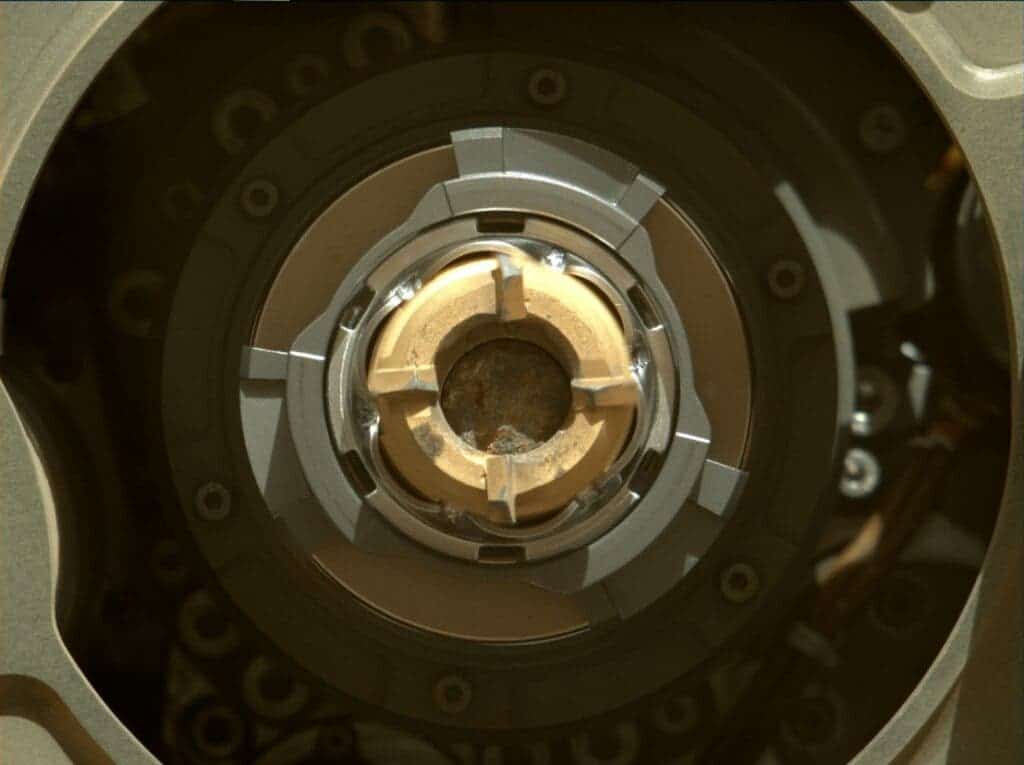The second time’s the charm, at least for NASA’s Perseverance rover on Mars. The car-sized robot was apparently able to retrieve a rock sample on Mars on the second attempt, drilling the core of a rock dubbed “Rochette.” However, celebrations will need to wait just a bit, as more information is still needed before the sampling can be declared a success, mission engineers say.

If at first you don’t succeed
The rover had already made a sampling attempt on August 5, but the rock it drilled into was too soft and crumbled to dust that didn’t make it to the sampling tube. If Perseverance was successful this time with its drilling attempt, it would be the first-ever rock section collected on another planet that is set to return to Earth. Quite something!
Perseverance arrived in Mars back in February, with the mission of collecting more than two dozen cores over the next year or so. If everything goes according to plan, the samples will be brought back to Earth as in 2031 by a joint United States and European effort. For now, NASA is now waiting for better pictures from Mars before declaring the core drilling an actual success.
“The project got its first cored rock under its belt, and that’s a phenomenal accomplishment,” Jennifer Trosper, project manager at NASA, said in a statement. “The team determined a location, and selected and cored a viable and scientifically valuable rock. We did what we came to do. We remain encouraged that there is sample in this tube.”
Following the first attempt, the scientists at NASA piloted Perseverance to a new area so to look for a different kind of rock to sample. The rover was driven to the west, where the team found a larger rock that seemed less likely to disintegrate by deploying tools on it. Still, several tests were done before going for the actual drilling procedure.
Perseverance took photos of the rock and did an abrasion test to check if the rock, Rochette, was durable enough for the sample. Among many tools, the rover has a drill that can spin and hammer into the rock. The abrasion test was successful, so the scientists gave the green light. Perseverance then used the drill and extracted the core sample.
A careful drilling
Images from the rover’s cameras show that the rock made it to the tube this time without crumbling into dust. Nothing seemed to get stuck in the mouth of the tube, which is good, as it has to be closed and stored in order to be safely delivered. But the researchers were worried about one photo that showed darkness in the tube, which could mean that the rock was shaken out of the tube.

Still, NASA remains optimistic and believes this is just due to bad lighting, and the sample is safely stored. That’s why they’ve decided to take more photos under diverse lighting conditions and then make the official announcement on whether the rock core was collected or not. The announcement could be done as early as tomorrow, with the space community currently on the edge of their chairs.
Perseverance has 43 sampling tubes, and NASA hopes to fill at least 20 of them before calling an end to the mission. While the rover has been chilling on Mars in February, it took its time before doing science work as it was first helping with the first flights of NASA’s Mars helicopter Ingenuity, designed to show that aerial exploration is possible on Mars.






